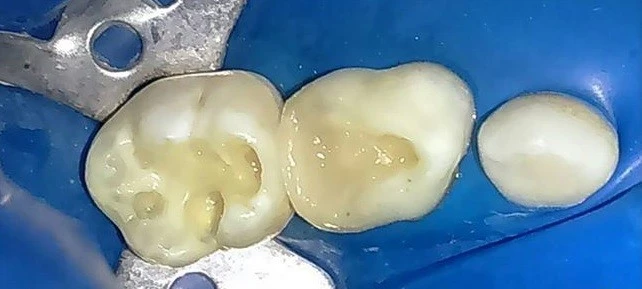Insights on MTA Pulpotomy
Mineral trioxide aggregate (MTA) is a common pulpotomy agent with favorable effect in primary teeth; however, its successfulness in vital pulp therapy depends on case selection and application technique. MTA pulpotomy is believed to preserve the radicular pulp of primary teeth, relieve their pain, avoid welling and retain the tooth till shedding. MTA was discovered by Torabinejad at the Loma Linda University and its first dental application was by Lee et al. in 1993.MTA is biocompatible, nontoxic and hydraulic dental cement derived from Portland cement, and it is now advocated for pulpotomy procedures in primary teeth.
It is mainly used in teeth with deep carious lesions and restorable coronal portion; it is also applied in proximal lesions which involve more than half dentine thickness on radiographic examination. Adequate remaining tooth structure is needed for good retention of stainless steel crown and coronal seal. There have to be no signs of pulp degeneration, spontaneous pain, sinus tract, mobility or on percussion as these are signs of irreversible pulpitis or abscess. It is still questionable whether primary teeth with previous treatments can be considered for MTA pulpotomy or not; similarly, MTA pulpotomy is considered contraindicated for primary teeth with no permanent successors. On radiographic examination, the target tooth for MTA pulpotomy should exhibit neither root resorption nor widened lamina dura. In addition, there should be no periradicular radiolucency.
Rubber dam is preferably carried out for quadrant or single tooth isolation with MTA pulpotomy and crown preparation. Sodium hypochlorite (NaOCl) solution can be used prior to MTA pulpotomy to dissolve and remove remaining pulp tissues that may lead to infection of the radicular pulp, followed by drying the pulp chamber. Controlling pulpal bleeding can take average 3–5 min and should be done using sterile cotton wool pellet with gentle pressure.

MTA is firstly mixed on a glass slab with sterile water as per the manufacturer’s recommendations; the final mix must be wet with sand-like consistency. The MTA mixture must be adequately pressed against the walls/floor of the pulp chamber, and the MTA bulk thickness must be 3–4 mm, covering all root canal orifices and the pulpal floor. It is recommended to take an X-ray in this work stage to check the thickness of MTA layer. Final filling of the tooth can be glass ionomer followed by stainless steel crown.
The patient and parents are given oral hygiene instructions: the child must be recommended to maintain the shiny metallic appearance of the crown by regular brushing. Regular follow up must be conducted every 6 months, that is, the tooth must be examined for any signs or symptoms and radiographic examination may indicate dentin bridge formation.
It is worth mentioning that selecting white or gray MTA determines the successfulness of dentin bridge formation, potential necrosis and inflammatory cells in histologic evaluation. Dentin bridge formation is also governed by the rate of transforming growth factor-β1 and Type I collagen. Proper pre- and postoperative clinical and radiographic examinations are important to determine MTA stabilization.

